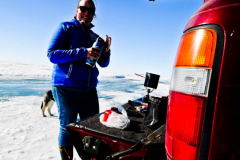I admit
I am a Landcruiser Nerd. I don’t tape on my glasses, or wear a shirt pocket pen holder…
But – I do live and dream about landcruisers, and have a few in my yard. For the number of times that people have asked – “How many landcruisers do you have ?”, had they given me 1$ – I could have bought another one. !
Yes, I do have a few, and am still looking at landcruisers for sale. One day a few weeks ago one caught my eye. It is a 1984 BJ60 that had been converted to a pickup (Australian ‘Ute’). Although in much better condition that mine, it looked very similar. Could the same person have done the conversion from SUV to pickup ?

I contacted the owner so determine if he had any information. Interesting enough, he had also been contacted a few months ago asking if he had seen a similar truck with a custom deck, a vehicle that he had modified 16 years previously.
Well, that truck is the one I have now !. Strange coincidence !

16 Years ago (2006)




And Now (2021)

It hasn’t changed much. The paint is more dull, a bit more dirty, door corners are rusty. It even had the same roof rack (which I have since removed).
During that time it was in Lytton BC and Salmo BC with two different owners.



























































































































































